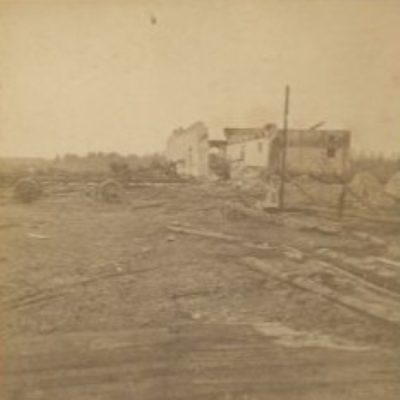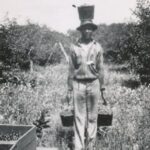Despite being the most disastrous and fatal fire in the history of the U.S., the Peshtigo Fire did not receive much national attention because a similar disaster in a larger city occurred on the same day. On October 8, 1871, the Great Chicago Fire burned for two days destroying thousands of buildings and killing around 300 people. Legend has it that a cow at Catherine O’ Leary’s farm tipped over a lantern and started the fiery inferno. The fire moved quickly due to dry weather and the copious amount of wooden buildings and sidewalks. The fire affected people of all ages and social classes in the business district of the city. Filled with large and small businesses, the business district became an economic center of Chicago. When the fire moved through the city, Chicagoans “saw the work of forty years wiped away in a single day.”[1] However, the stockyards and mills along the riverfront survived the blaze, allowing for the city to redevelop.
Written by Morgan Zdroik, July 2020.


SOURCES
Sarah Derouin, “Benchmarks: October 8, 1871: The Deadliest Wildfire in American History Incinerates Peshtigo, Wisconsin.” EARTH Magazine, 19 September 2017. Accessed 5 December 2019. https://www.earthmagazine.org/article/benchmarks-october-8-1871-deadliest-wildfire-american-history-incinerates-peshtigo-wisconsin.
History.com Editors, “Chicago Fire of 1871.” History.com, 4 March 2010. https://www.history.com/topics/19th-century/great-chicago-fire.
Tom Hultquist, “The Great Midwest Wildfires of 1871,” National Weather Service. https://www.weather.gov/grb/peshtigofire2
Joseph M. Moran and E. Lee Somerville “Tornadoes of Fire at Williamsonville, Wisconsin, October 8, 1871.” Transactions of the Wisconsin Academy of Sciences, Arts and Letters Vol. 78, 1990.
John J. Pauly, “The Great Chicago Fire as a National Event.” American Quarterly 36, no. 5 (1984): 670. doi:10.2307/2712866.
Peter Pernin, “The Great Peshtigo Fire: An Eyewitness Account.” The Wisconsin Magazine of History 54, no. 4 (1971): 246-72. www.jstor.org/stable/4634648.
Peshtigo Fire Museum, “History of the Peshtigo Fire,” Accessed 5 December 2019. http://peshtigofiremuseum.com/fire/.
Justin Skiba, “The Fire That Took Williamsonville,” Door County Pulse, 2 September 2016. https://doorcountypulse.com/fire-took-williamsonville/
Wisconsin Historical Society, “October 8, 1871, the Night Peshtigo, Wisconsin was Destroyed by Fire,” Historical Essay. https://www.wisconsinhistory.org/Records/Article/CS2911
Wisconsin Historical Society, “Peshtigo Fire,” Historical Essay. https://www.wisconsinhistory.org/Records/Article/CS1750.




